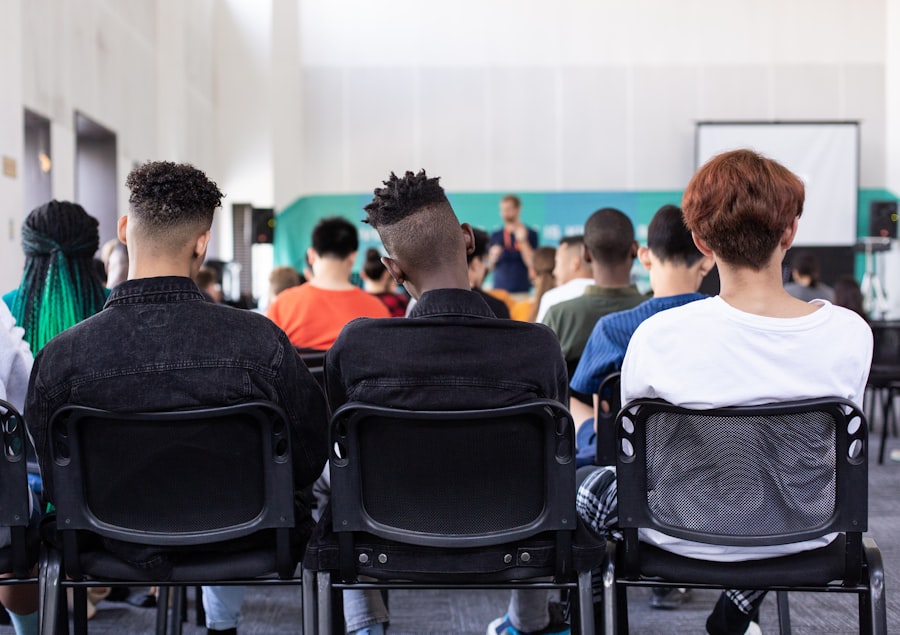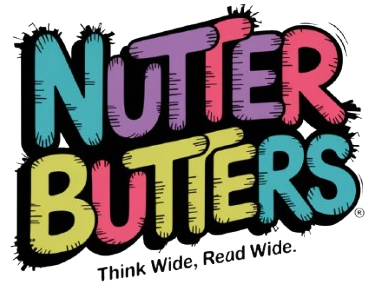
Building a Strong Classroom Community: Educ 201 Quiz
Creating a robust classroom community is essential for fostering an environment conducive to learning and personal growth. A strong community not only enhances academic performance but also nurtures social and emotional development among students.
This sense of belonging can significantly reduce anxiety and behavioral issues, allowing students to focus on their studies and personal development. Research has shown that classrooms characterized by strong community ties often see improved attendance rates, higher levels of participation, and increased motivation among students. Moreover, a well-established classroom community serves as a foundation for developing essential life skills.
Students learn to navigate social dynamics, practice empathy, and develop conflict resolution skills within a supportive environment. This communal aspect of education prepares students for future interactions in diverse settings, whether in higher education or the workforce. By fostering a sense of belonging, educators can help students cultivate resilience and adaptability, qualities that are increasingly important in our rapidly changing world.
Thus, the importance of building a strong classroom community cannot be overstated; it is a critical component of holistic education that benefits both individual students and the collective classroom dynamic.
Key Takeaways
- Building a strong classroom community is essential for creating a positive and supportive learning environment.
- Strategies such as icebreakers, team-building activities, and establishing classroom norms can foster a positive classroom environment.
- Promoting inclusivity and diversity in the classroom involves acknowledging and celebrating differences, and creating a safe space for all students.
- Encouraging collaboration and teamwork among students can be achieved through group projects, peer mentoring, and cooperative learning activities.
- Developing effective communication skills is crucial for building strong relationships and resolving conflicts in the classroom.
Strategies for Fostering a Positive Classroom Environment
Establishing Clear Expectations
One effective approach is to establish clear expectations and norms at the beginning of the school year. By involving students in the creation of classroom rules, teachers can ensure that everyone feels invested in the community’s success.
Reinforcing Norms and Promoting Reflection
Regularly revisiting these norms can reinforce their importance and provide opportunities for reflection on how well the class is adhering to them. This helps students develop a sense of responsibility and accountability for their actions.
Integrating Social-Emotional Learning
Incorporating activities that promote social-emotional learning (SEL) can significantly enhance the classroom atmosphere. Activities such as morning meetings or circle time allow students to share their thoughts and feelings in a safe space, fostering connections among classmates. Integrating SEL into the curriculum can help students develop critical skills such as self-awareness, empathy, and emotional regulation, which are vital for maintaining a positive classroom environment.
Promoting Inclusivity and Diversity in the Classroom

Promoting inclusivity and diversity within the classroom is paramount for creating an equitable learning environment where all students feel valued and respected. Educators can begin by incorporating diverse perspectives into the curriculum, ensuring that materials reflect a variety of cultures, backgrounds, and experiences. This not only enriches the learning experience but also allows students to see themselves represented in what they study.
For instance, literature selections can include authors from various ethnicities and backgrounds, while history lessons can highlight contributions from underrepresented groups. By doing so, educators validate the identities of all students and foster a sense of belonging. Additionally, creating opportunities for students to share their unique backgrounds and experiences can further enhance inclusivity.
Activities such as cultural presentations or “heritage days” encourage students to celebrate their identities while educating their peers about different cultures. This exchange of knowledge promotes understanding and respect among classmates, breaking down stereotypes and fostering a more inclusive atmosphere. Furthermore, teachers should be mindful of their language and behavior, modeling inclusivity through their interactions with students.
By actively addressing biases and promoting respectful dialogue, educators can cultivate an environment where diversity is not only acknowledged but celebrated.
Encouraging Collaboration and Teamwork Among Students
| Metrics | Results |
|---|---|
| Number of group projects completed | 25 |
| Percentage of students participating in group discussions | 80% |
| Feedback on teamwork skills from student surveys | 4.5/5 |
| Number of collaborative activities organized | 10 |
Collaboration and teamwork are essential skills that prepare students for success in both academic and professional settings. To encourage these skills within the classroom, educators can implement group projects that require students to work together towards a common goal. These projects can range from research assignments to creative endeavors such as building models or producing presentations.
By assigning roles within groups—such as leader, researcher, or presenter—teachers can help students understand the importance of each member’s contribution while also fostering accountability. In addition to structured group work, incorporating cooperative learning strategies can further enhance teamwork among students. Techniques such as “think-pair-share” or jigsaw activities allow students to engage with one another in meaningful ways while promoting active participation.
For example, in a jigsaw activity, each student becomes an expert on a specific topic before sharing their knowledge with their peers. This method not only encourages collaboration but also reinforces the idea that every student has valuable insights to contribute. By creating opportunities for teamwork, educators help students develop essential interpersonal skills that will serve them well throughout their lives.
Developing Effective Communication Skills
Effective communication is a cornerstone of successful interpersonal relationships and academic achievement. In the classroom setting, developing these skills involves teaching students how to express their thoughts clearly while also listening actively to others. One effective strategy is to incorporate structured discussions into lessons, where students are encouraged to articulate their ideas and respond thoughtfully to their peers’ contributions.
Techniques such as Socratic seminars or fishbowl discussions promote critical thinking while allowing students to practice articulating their viewpoints in a respectful manner. Moreover, integrating technology into communication practices can enhance students’ ability to convey information effectively. Tools such as discussion boards or collaborative platforms like Google Docs enable students to engage in written communication with their peers outside of traditional classroom settings.
These platforms encourage thoughtful responses and provide opportunities for peer feedback, which is crucial for developing strong writing skills. Additionally, incorporating presentations into the curriculum allows students to practice verbal communication skills while building confidence in public speaking—a vital skill in both academic and professional contexts.
Addressing Conflict and Resolving Issues in the Classroom

Modeling Effective Conflict Resolution Strategies
Conflict is an inevitable part of any community, including classrooms; however, how conflicts are addressed can significantly impact the overall classroom environment. Educators play a crucial role in modeling effective conflict resolution strategies that empower students to navigate disagreements constructively.
Teaching Communication Strategies
One approach to effective conflict resolution is to teach students about the importance of using “I” statements when expressing their feelings during conflicts. For example, instead of saying “You never listen,” a student might say, “I feel unheard when you interrupt me.” This technique encourages personal accountability while promoting respectful dialogue.
Implementing Restorative Practices
In addition to teaching communication strategies, implementing restorative practices can be an effective way to address conflicts within the classroom. Restorative practices focus on repairing harm rather than assigning blame, encouraging open dialogue between conflicting parties. For instance, after a disagreement occurs, teachers can facilitate a restorative circle where each student has an opportunity to share their perspective while others listen without interruption. This process fosters empathy and understanding while helping students develop problem-solving skills that will benefit them throughout their lives.
Building Trust and Mutual Respect Among Students and Teachers
Trust and mutual respect are foundational elements of any successful classroom community. To cultivate these qualities, educators must create an atmosphere where students feel safe expressing themselves without fear of judgment or ridicule. One effective strategy is for teachers to share their own experiences and vulnerabilities with students, demonstrating that everyone has challenges they face.
This openness encourages students to reciprocate by sharing their thoughts and feelings, thereby fostering deeper connections within the classroom. Additionally, establishing consistent routines and expectations helps build trust between teachers and students. When students know what to expect from their teacher regarding behavior management and academic support, they are more likely to feel secure in their learning environment.
Regular check-ins with students—whether through informal conversations or structured feedback sessions—can further enhance this trust by showing that educators genuinely care about their well-being and success. By prioritizing trust and mutual respect, teachers create a supportive atmosphere where all students can thrive.
Celebrating Achievements and Building a Sense of Belonging
Recognizing achievements—both big and small—is vital for building a sense of belonging within the classroom community. Celebrations can take many forms: from acknowledging academic accomplishments during class discussions to hosting end-of-term celebrations that highlight individual and group successes. These moments not only boost student morale but also reinforce the idea that each member of the community contributes uniquely to its overall success.
Furthermore, creating opportunities for peer recognition fosters camaraderie among students. Implementing systems such as “shout-out boards” or peer-nominated awards allows classmates to acknowledge one another’s efforts publicly. This practice not only enhances self-esteem but also strengthens relationships among peers by promoting positivity within the classroom environment.
Ultimately, celebrating achievements cultivates a sense of belonging that encourages continued engagement and investment in both individual learning journeys and collective classroom goals.
FAQs
What is the educ 201 quiz about?
The educ 201 quiz is about the concept of the classroom as a community and the role of the teacher in fostering a sense of community among students.
What is the importance of the classroom as a community?
The classroom as a community is important for creating a supportive and inclusive learning environment where students feel connected to each other and to their teacher. This sense of community can enhance student engagement and academic achievement.
What are some strategies for building a classroom community?
Strategies for building a classroom community include promoting open communication, fostering a sense of belonging, encouraging collaboration and teamwork, and creating a positive and respectful classroom culture.
How does the teacher contribute to building a classroom community?
The teacher plays a crucial role in building a classroom community by modeling positive behavior, facilitating meaningful interactions among students, and creating opportunities for students to develop social and emotional skills.
What are the benefits of a strong classroom community?
A strong classroom community can lead to increased student motivation, improved behavior, higher levels of academic achievement, and a more positive overall learning experience for students.



